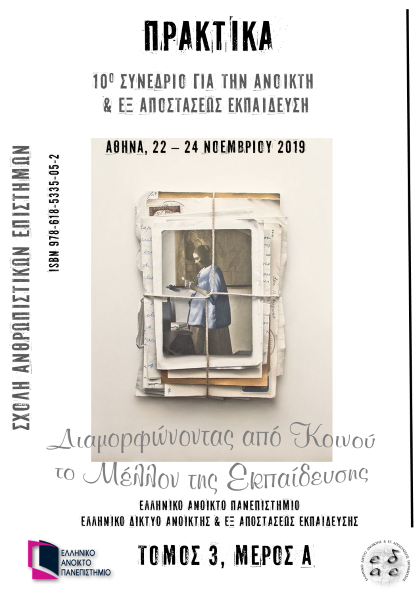Η Τηλεδιάσκεψη στο Δημοτικό Σχολείο: Σχεδιασμός και Ανάπτυξη Εποικοδομητικής Διδακτικής Προσέγγισης με έμφαση στην Κοινωνική Παρουσία.

Περίληψη
Ο σκοπός αυτής της εργασίας είναι η μελέτη της κοινωνικής παρουσίας όπως αυτή παρουσιάζεται σε περιβάλλον διαδραστικής τηλεδιάσκεψης.
Άμεση συνέπεια της μελέτης της κοινωνικής παρουσίας σε τέτοιου είδους μαθησιακά περιβάλλοντα οδήγησε στη δημιουργία και στην ανάπτυξη ενός προτεινόμενου συνδυαστικού πλουραλιστικού μαθησιακού/διδακτικού μοντέλου αξιοποιώντας κυρίως τη σύγχρονη επικοινωνία και ιδιαίτερα της διαδραστικής τηλεδιάσκεψης δίνοντας έμφαση στην κοινωνική παρουσία, την ασύγχρονη επικοινωνία ως υποστήριξη και την πρόσωπο με πρόσωπο επικοινωνία.
Η έρευνα στηρίχθηκε στη μεθοδολογία της έρευνας δράσης και εφαρμόστηκε σε μαθητές Δημοτικού Σχολείου ηλικίας 10-12 χρονών, ανάμεσα σε δημοτικά σχολεία της Αττικής και της Κρήτης (Ελλάδα), κατά τη διάρκεια των ετών 2009-2010. Επιπλέον, βασίστηκε στη μεθοδολογία της Διαδραστικής Τηλεδιάσκεψης καθώς και στο μοντέλο της Συνδυαστικής Μάθησης (blended learning).
Ως προς την εφαρμογή της, πραγματοποιήθηκαν δύο Κύκλοι Τηλεδιασκέψεων, με τέσσερις τηλεδιασκέψεις κάθε κύκλος, με συγκεκριμένο περιβαλλοντικό θέμα και συγκεκριμένες δραστηριότητες, οι οποίες βασίστηκαν στον εποικοδομισμό, στην ομαδοσυνεργατική, στη μέθοδο Project.
Τα αποτελέσματα έδειξαν ότι η ανάγκη για ένα παιδαγωγικό πλαίσιο το οποίο να στηρίζεται σε μεθοδολογικές προσεγγίσεις και περιεχόμενο με έντονη την κοινωνική αλληλεπίδραση-κοινωνική παρουσία, καθώς και να βασίζεται σε Προηγμένες Μαθησιακές Τεχνολογίες είναι επιτακτική και οδηγεί σε μαθησιακές και κοινωνικές δεξιότητες, οι οποίες είναι απαραίτητες για το μαθητή του 21ου αιώνα.
Λεπτομέρειες άρθρου
- Τεύχος
- Τόμ. 10 Αρ. 3A (2019)
- Ενότητα
- Άρθρα


